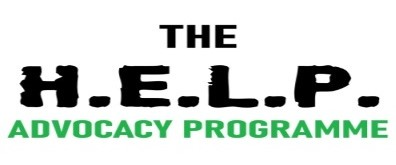Explain the measures of implementation of Human Rights.
Measures for Implementation of Human Rights
Implementation of human rights involves mechanisms and strategies at national, regional, and international levels to ensure the protection, promotion, and enforcement of these rights. Here is a pointwise explanation of measures for implementing human rights in the context of human rights law:
1. Constitutional Provisions
- Many countries incorporate human rights into their constitutions to guarantee fundamental rights such as equality, freedom of speech, and protection against discrimination.
- Example: The Indian Constitution includes Fundamental Rights (Part III) and Directive Principles of State Policy (Part IV) for promoting human rights.
2. National Legislation
- Enacting specific laws to enforce human rights, such as labor laws, anti-discrimination acts, and criminal justice reforms.
- Example:
- Protection of Human Rights Act, 1993 (India) for setting up Human Rights Commissions.
- Equal Pay Act (USA) to address gender pay gaps.
3. Establishment of National Human Rights Institutions (NHRIs)
- Creation of bodies like National Human Rights Commissions and State Human Rights Commissions to investigate, monitor, and address violations.
- Example: The National Human Rights Commission (NHRC) in India investigates violations and provides recommendations to the government.
4. Judicial Mechanisms
- Courts play a significant role in enforcing human rights through judicial reviews, judgments, and interpretations of laws.
- Example: Landmark cases such as Brown v. Board of Education (1954) in the USA established equality in education systems.
5. International Human Rights Instruments
- Ratification and implementation of international treaties and conventions such as:
- Universal Declaration of Human Rights (UDHR), 1948
- International Covenant on Civil and Political Rights (ICCPR), 1966
- International Covenant on Economic, Social, and Cultural Rights (ICESCR), 1966
- States align their domestic laws with these international obligations.
6. Regional Mechanisms
- Regional organizations establish frameworks to implement human rights.
- European Court of Human Rights (ECHR): Ensures compliance with the European Convention on Human Rights.
- African Commission on Human and Peoples’ Rights: Monitors human rights across African nations.
7. Administrative Measures
- Governments set up departments and agencies to oversee the implementation of human rights.
- Example:
- Women’s Commissions or Minority Commissions to focus on specific vulnerable groups.
- Social Welfare Departments to ensure economic and social rights.
8. Advocacy and Civil Society Engagement
- Non-governmental organizations (NGOs) and civil society groups raise awareness, monitor compliance, and provide legal aid for victims of human rights violations.
- Example: Amnesty International and Human Rights Watch actively report and campaign for human rights.
9. Education and Awareness
- Incorporating human rights education in school curriculums and public campaigns to promote awareness among citizens.
- Example: United Nations’ World Programme for Human Rights Education focuses on integrating human rights education globally.
10. Reporting and Monitoring Mechanisms
- States are required to submit periodic reports to international bodies (e.g., United Nations Human Rights Council) regarding their compliance with human rights treaties.
- Example: Universal Periodic Review (UPR) by the UN monitors each country’s human rights situation.
11. Role of Media
- Media plays a crucial role in highlighting human rights issues, raising public awareness, and holding governments accountable for violations.
12. International Sanctions and Interventions
- The international community can impose sanctions or intervene in cases of gross human rights violations.
- Example: Sanctions imposed on countries engaging in systemic violations, such as apartheid in South Africa.
13. Providing Remedies
- Legal remedies such as compensation, restitution, and rehabilitation for victims of human rights abuses.
- Example: Compensation for wrongful imprisonment or rehabilitation for victims of trafficking.
14. Public Interest Litigation (PIL)
- Citizens and NGOs can file lawsuits to address human rights violations affecting the public or marginalized groups.
- Example: In India, PILs under Article 32 and 226 of the Constitution are used for human rights enforcement.
15. Social and Economic Development
- Promoting social and economic policies that reduce inequality and poverty, which are root causes of human rights violations.
- Example: Welfare schemes, education for all, and healthcare initiatives.
16. Training of Law Enforcement Officials
- Police, judiciary, and armed forces are trained in human rights laws to prevent violations and ensure compliance during enforcement activities.
Summary :
The effective implementation of human rights requires coordinated efforts across multiple levels—national, regional, and international—using a combination of legal, administrative, and social measures. By addressing violations and promoting awareness, these measures ensure the protection and realization of fundamental human rights for all individuals.
- Textbook on Human Rights Law and Practice by Rashee Jain
- International Law & Human Rights by Dr. H.O. Agarwal
- Human Rights by Michael Freeman
- International Human Rights Law by David Harris
- A philosophical Introduction to Human Rights by Thomas Mertens
- Human Rights Law by Howard Davis
- Human Rights A Very Short Introduction by Andrew Clapham

Comments
Post a Comment